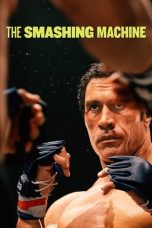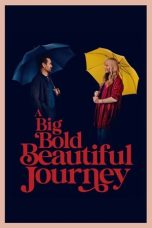“Trainspotting” (1996) – A Raw and Unflinching Look at Youth and Addiction
Introduction
“Trainspotting” (1996), directed by Danny Boyle and based on the novel by Irvine Welsh, is a film that delves into the lives of a group of young heroin addicts in Edinburgh, Scotland. With its gritty realism, dark humor, and compelling performances, “Trainspotting” has become a cult classic. This review explores the film’s plot, technical achievements, themes, and legacy, along with information on where to stream it in the United States.
Plot Summary
“Trainspotting” centers around Mark Renton (Ewan McGregor), a young man deeply entrenched in Edinburgh’s heroin scene. The film follows Renton and his friends: the charming but reckless Sick Boy (Jonny Lee Miller), the simple-minded and sweet Spud (Ewen Bremner), the violent Begbie (Robert Carlyle), and the clean-cut athlete Tommy (Kevin McKidd), who eventually falls into addiction himself.
The film opens with Renton’s decision to quit heroin, leading to a harrowing withdrawal sequence. Despite his attempts to go straight, he is repeatedly drawn back into the chaotic world of drugs. The narrative weaves through various episodes of their lives, capturing the highs and lows of addiction with stark honesty.
Renton’s life takes a significant turn when he moves to London for a fresh start. However, his past catches up with him when Begbie and Sick Boy arrive, dragging him back into their schemes. The climax involves a risky heroin deal, which tests Renton’s resolve to change his life. The film concludes with Renton seizing an opportunity to escape his toxic environment, leaving behind money for Spud as a gesture of goodwill.
Cinematography and Visual Style
Brian Tufano’s cinematography in “Trainspotting” is both dynamic and innovative, capturing the frenetic energy and grim reality of the characters’ lives. The film employs a range of visual techniques, from the surreal and nightmarish withdrawal scenes to the kinetic depiction of drug highs and lows. The famous “toilet scene,” where Renton dives into a filthy lavatory, showcases the film’s willingness to blend dark humor with disturbing imagery.
The use of color and lighting enhances the film’s atmosphere, with bright, vibrant hues during drug-fueled moments contrasting with the dull, grim tones of everyday life. The camera work, often handheld, adds to the sense of immediacy and intimacy, drawing the audience into the characters’ chaotic world.
Themes and Symbolism
“Trainspotting” tackles themes of addiction, escapism, and the search for meaning in a disaffected youth. The film portrays heroin addiction as both a desperate escape from reality and a destructive force that traps individuals in a cycle of dependency and despair.
The film also critiques the lack of opportunities and direction for young people in post-industrial Scotland. The characters’ nihilism and hedonism reflect a broader sense of societal disillusionment. Renton’s famous monologue, “Choose Life,” is a scathing commentary on consumerism and conventional aspirations, highlighting the characters’ rejection of mainstream values.
Symbolically, heroin represents both a means of escape and a prison. The repeated imagery of needles, spoons, and drugs underscores the omnipresence of addiction in their lives. The film’s ending, with Renton choosing to break free, symbolizes a glimmer of hope and the possibility of redemption.
Performance and Characterization
The performances in “Trainspotting” are uniformly strong, with Ewan McGregor delivering a standout portrayal of Renton. McGregor captures the character’s complexity, from his charismatic charm to his deep vulnerability and desperation. His journey from addiction to a tentative resolve for change forms the emotional core of the film.
Jonny Lee Miller’s Sick Boy, Robert Carlyle’s Begbie, Ewen Bremner’s Spud, and Kevin McKidd’s Tommy each bring depth and nuance to their roles, creating a believable and engaging ensemble. Carlyle’s Begbie, in particular, stands out as a volatile and terrifying presence, adding a layer of tension and unpredictability to the story.
Critical Reception and Legacy
“Trainspotting” received critical acclaim for its bold storytelling, energetic direction, and powerful performances. Critics praised the film’s unflinching portrayal of addiction and its ability to balance dark humor with serious themes. The film’s impact on popular culture is significant, influencing a generation of filmmakers and becoming a touchstone for discussions about addiction and youth culture.
The film’s soundtrack, featuring iconic tracks from artists like Iggy Pop, Underworld, and Lou Reed, became hugely popular and is considered one of the best movie soundtracks of all time. “Trainspotting” also spawned a sequel, “T2 Trainspotting,” in 2017, which revisits the characters two decades later.
Where to Watch “Trainspotting”
For those interested in watching “Trainspotting,” the film is available on several streaming platforms and rental services in the United States.
- Streaming Services: The film can be streamed on Hulu and Amazon Prime Video, offering high-definition versions that preserve the film’s visual and emotional impact.
- Rental/Purchase Services: “Trainspotting” is also available for rental or purchase on Google Play Movies, Apple iTunes, and Vudu. These platforms provide options for both standard and high-definition viewing, ensuring a high-quality cinematic experience.
Conclusion
“Trainspotting” (1996) is a raw and powerful exploration of addiction, youth, and the search for meaning. Directed by Danny Boyle and featuring standout performances by Ewan McGregor and the ensemble cast, the film offers an unflinching look at the highs and lows of heroin addiction. For a film that captures the chaotic energy and dark humor of disaffected youth, be sure to stream or rent “Trainspotting” on your preferred platform.
Keywords: Trainspotting, Danny Boyle, Ewan McGregor, 1996 film, film review, Trainspotting streaming, Hulu, Amazon Prime Video, Google Play Movies, Apple iTunes, Vudu, addiction, youth culture, cult classic.
















